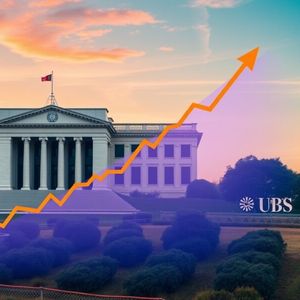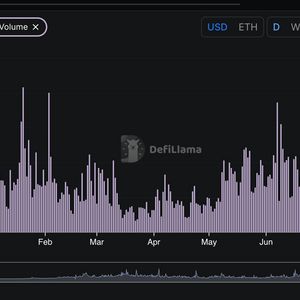BitcoinWorld Australian Dollar: UBS’s Optimistic Forecast Amidst RBA Rate Cut In the dynamic world of finance, where every central bank move sends ripples across global markets, the recent decision by the Reserve Bank of Australia (RBA) to cut its official cash rate to 3.6% has certainly captured attention. For many, a rate cut typically signals economic weakness and a potential depreciation of the local currency. However, in a surprising turn, financial giant UBS has maintained a remarkably positive AUD forecast , challenging conventional wisdom and offering a unique perspective for investors, including those in the cryptocurrency space who closely monitor macro-economic shifts. How can a rate cut align with an optimistic currency outlook? Let’s dive deep into UBS’s rationale and what this means for the Australian Dollar and the broader Forex market . Understanding the RBA Rate Cut: A Strategic Move? The Reserve Bank of Australia’s decision to lower its cash rate to 3.6% was a pivotal moment for the Australian economy. This RBA rate cut was not made in isolation but was a response to a complex interplay of domestic and global economic factors. Central banks typically adjust interest rates to manage inflation, stimulate economic growth, and maintain financial stability. In Australia’s case, the RBA was likely grappling with a cooling economy, persistent inflationary pressures, and the global economic slowdown. Inflationary Pressures: While inflation has been a global concern, the RBA aims to keep it within a target range. A rate cut, paradoxically, can be a preemptive measure if the central bank foresees a significant slowdown that could push inflation below target in the future, or if it believes current inflation is primarily supply-side driven and demand needs support. Economic Growth Concerns: Rising interest rates over the past year have started to bite into household spending and business investment. A rate cut provides some relief, making borrowing cheaper and potentially encouraging economic activity. Global Economic Headwinds: The Australian economy is highly sensitive to global conditions, particularly the economic health of its major trading partners like China. Signs of a global slowdown or recession risks can prompt the RBA to ease monetary policy to cushion the domestic impact. Employment Stability: Maintaining a strong labor market is another key objective. If unemployment begins to tick up, a rate cut can provide the necessary stimulus to protect jobs. This strategic adjustment by the RBA sends a clear signal about the central bank’s assessment of the current economic climate and its forward-looking policy stance. Decoding UBS’s Optimistic AUD Forecast: What Are They Seeing? Against the backdrop of an RBA rate cut , UBS’s positive AUD forecast might seem counterintuitive. Conventional wisdom suggests that lower interest rates make a currency less attractive to foreign investors, leading to depreciation. However, UBS’s analysis delves deeper, identifying several compelling factors that underpin their optimistic outlook for the Australian Dollar . Commodity Price Resilience: Australia is a major exporter of commodities, including iron ore, coal, and liquefied natural gas (LNG). UBS likely anticipates continued robust demand and prices for these commodities, driven by global industrial activity and energy needs. Strong commodity prices translate into higher export revenues, which directly support the AUD. China’s Reopening and Recovery: China is Australia’s largest trading partner. UBS’s positive view on the AUD is heavily influenced by expectations of a significant economic rebound in China following the easing of its stringent COVID-19 policies. A revitalized Chinese economy would boost demand for Australian resources and services, providing a strong tailwind for the AUD. Relative Interest Rate Advantage: While the RBA cut rates, Australia’s interest rates might still offer a relatively attractive yield compared to other major developed economies, especially if other central banks are expected to cut more aggressively or maintain near-zero rates. This ‘carry’ appeal can still draw foreign capital. Strong Economic Fundamentals: UBS may be emphasizing Australia’s underlying economic strength, including a relatively low unemployment rate, stable political environment, and sound financial system, which make it an attractive destination for investment despite short-term rate adjustments. UBS’s perspective highlights a nuanced understanding of the forces at play, looking beyond immediate rate changes to the broader economic narrative. What Drives UBS’s Broader Outlook for Australia? The positive UBS outlook on the Australian Dollar is not just about the currency itself, but stems from a comprehensive assessment of Australia’s economic trajectory. Their confidence is built on a foundation of several key pillars, balanced against potential challenges. Benefits Underpinning the UBS Outlook: Resilient Domestic Economy: Despite global uncertainties, Australia’s domestic economy has shown remarkable resilience. Consumer spending, while facing headwinds, has remained relatively robust, supported by a strong labor market. Fiscal Policy Support: The Australian government’s fiscal policies, including infrastructure spending and targeted support measures, are likely seen by UBS as providing an additional layer of economic stability and growth impetus. Diversified Export Base: While commodities are crucial, Australia also has a growing services sector, particularly education and tourism, which are poised for recovery as global travel resumes. This diversification adds to economic stability. Sound Banking System: Australia’s banking sector is known for its stability and prudent regulation, providing a solid backbone for the economy and reducing financial systemic risks. Challenges Acknowledged by UBS: Global Slowdown Risks: A deeper-than-expected global recession could dampen demand for Australian exports, regardless of China’s recovery. Persistent Inflation: If inflation proves more stubborn than anticipated, the RBA might be forced to reverse course or hold rates higher for longer, impacting economic growth. Household Debt: Australian households carry significant debt, making them sensitive to interest rate changes and potentially limiting future consumption growth. The UBS outlook , therefore, is a carefully weighed assessment, acknowledging risks but placing greater emphasis on the underlying strengths and external catalysts for growth. The Australian Dollar’s Resilience: A Closer Look at its Drivers The Australian Dollar (AUD) is often considered a ‘commodity currency’ due to its strong correlation with global commodity prices. However, its performance is influenced by a multitude of factors beyond just resource exports. Understanding these drivers is crucial for anyone monitoring the Forex market . Global Risk Appetite: The AUD is typically a ‘risk-on’ currency. When global investors are optimistic about economic growth and willing to take on more risk, the AUD tends to strengthen. Conversely, during periods of global uncertainty or risk aversion, it often weakens. Interest Rate Differentials: Even after the RBA cut, the relative interest rate differential between Australia and other major economies (like the US, Japan, or Eurozone) plays a significant role. If Australian rates remain comparatively higher, it attracts ‘carry trade’ investors seeking better yields. China’s Economic Health: As mentioned, China’s economic performance is paramount. Any data signaling strength or weakness in China’s manufacturing, industrial output, or consumer spending can have an immediate impact on the AUD. US Monetary Policy: The policies of the US Federal Reserve are always a major influence on global currency markets. A stronger US dollar, driven by aggressive Fed tightening, can put downward pressure on the AUD, even if Australia’s fundamentals are strong. Domestic Economic Data: Key economic indicators such as GDP growth, employment figures, inflation rates, and consumer confidence surveys in Australia provide direct signals about the health of the economy and influence the AUD’s trajectory. The Australian Dollar ‘s movements are a complex dance of these interconnected global and domestic factors, making its forecasting a challenging yet rewarding endeavor. Navigating the Forex Market Amidst Divergent Policies The scenario of the RBA rate cut coupled with a positive UBS outlook creates an interesting dynamic within the broader Forex market . Central banks around the world are pursuing increasingly divergent monetary policies, leading to significant opportunities and risks for currency traders and investors. Implications for the Forex Market: Carry Trade Opportunities: If the AUD maintains a relatively attractive interest rate compared to funding currencies (like the Japanese Yen or Swiss Franc), the carry trade (borrowing in a low-interest-rate currency and investing in a higher-interest-rate currency) could become more appealing, driving demand for the AUD. Relative Strength vs. Weakness: The AUD’s performance will be heavily judged against other major currencies. For instance, if the US Federal Reserve continues to hike rates aggressively, the AUD/USD pair might face headwinds, even with a positive domestic outlook. Conversely, if the Eurozone or UK economies falter, the AUD could gain against EUR or GBP. Increased Volatility: Divergent central bank policies often lead to increased currency volatility. Traders need to be prepared for sharper price swings as market participants react to economic data and policy announcements from different regions. Risk-Reward Balance: Investors must carefully assess the risk-reward balance. While the AUD forecast from UBS is optimistic, global uncertainties mean that the path to appreciation might not be smooth. Actionable Insights for Traders: Monitor Commodity Prices: Keep a close eye on prices of iron ore, coal, and other key Australian exports. Track Chinese Data: Economic indicators from China are crucial for the AUD’s direction. Compare Interest Rate Differentials: Analyze the spread between Australian rates and those of other major economies. Diversify Portfolios: For those with exposure to the Australian Dollar , consider diversifying across different asset classes or currency pairs to mitigate risk. Stay Informed on Central Bank Rhetoric: Pay attention to speeches and minutes from the RBA, Fed, ECB, and other central banks for clues on future policy direction. The Forex market is a constant ebb and flow, and understanding these intricate relationships is key to navigating its complexities. Challenges and Potential Headwinds for the AUD’s Positive Trajectory While UBS’s positive AUD forecast provides an encouraging perspective, it’s crucial to acknowledge the potential headwinds that could challenge this optimistic trajectory. No economic outlook is without its risks, and the global landscape remains fraught with uncertainties. Deeper Global Recession: A more severe or prolonged global economic downturn than currently anticipated could significantly dampen demand for Australian exports, regardless of China’s recovery, thereby undermining the AUD’s strength. Further Aggressive RBA Cuts: If the Australian economy slows more sharply than expected, the RBA might be compelled to implement further, more aggressive rate cuts. This would reduce the AUD’s yield advantage and could lead to depreciation. China’s Economic Slowdown: While UBS anticipates a strong recovery in China, any significant setback or slower-than-expected growth in the Chinese economy would directly impact Australian commodity demand and, consequently, the AUD. Geopolitical Tensions: Escalating geopolitical conflicts, trade wars, or supply chain disruptions could create widespread market uncertainty, leading to a flight to safety and a weakening of risk-sensitive currencies like the AUD. Sticky Inflation Globally: If global inflation remains persistently high, forcing major central banks (especially the US Fed) to maintain a more hawkish stance, the interest rate differential could narrow or even reverse, putting pressure on the AUD. Domestic Policy Risks: Unforeseen domestic policy changes, natural disasters, or significant shifts in consumer confidence could also impact the Australian economy and currency. Prudent investors will weigh these potential challenges against the optimistic base case, maintaining a balanced perspective on the Australian Dollar ‘s future performance. Conclusion: A Nuanced Optimism for the Australian Dollar The recent RBA rate cut to 3.6% might, at first glance, appear to be a bearish signal for the Australian Dollar . However, the compelling UBS outlook presents a nuanced and remarkably optimistic AUD forecast , grounded in a deeper analysis of global and domestic economic forces. UBS’s confidence hinges on factors such as resilient commodity prices, a strong rebound in China, and Australia’s underlying economic stability. While challenges like global recession risks and persistent inflation remain, the positive drivers identified by UBS suggest a potential for the AUD to outperform expectations within the complex Forex market . For investors and traders, this situation underscores the importance of looking beyond headline numbers and understanding the intricate web of macro-economic factors. The Australian Dollar’s journey will continue to be influenced by global risk sentiment, central bank policies, and the economic health of its key trading partners. UBS’s stance offers a valuable perspective, highlighting that even amidst policy easing, a currency can find strength if fundamental drivers remain robust and external catalysts align positively. It’s a reminder that in the world of finance, sometimes, the most insightful views are those that challenge the obvious. To learn more about the latest Forex market trends, explore our article on key developments shaping the Australian Dollar and global interest rates. This post Australian Dollar: UBS’s Optimistic Forecast Amidst RBA Rate Cut first appeared on BitcoinWorld and is written by Editorial Team













